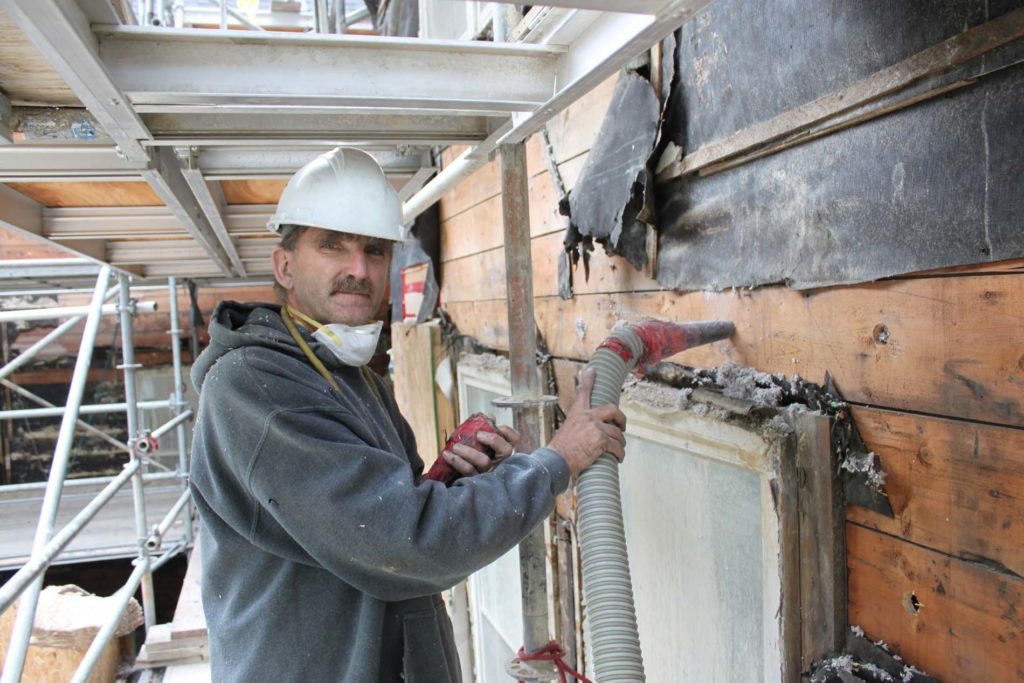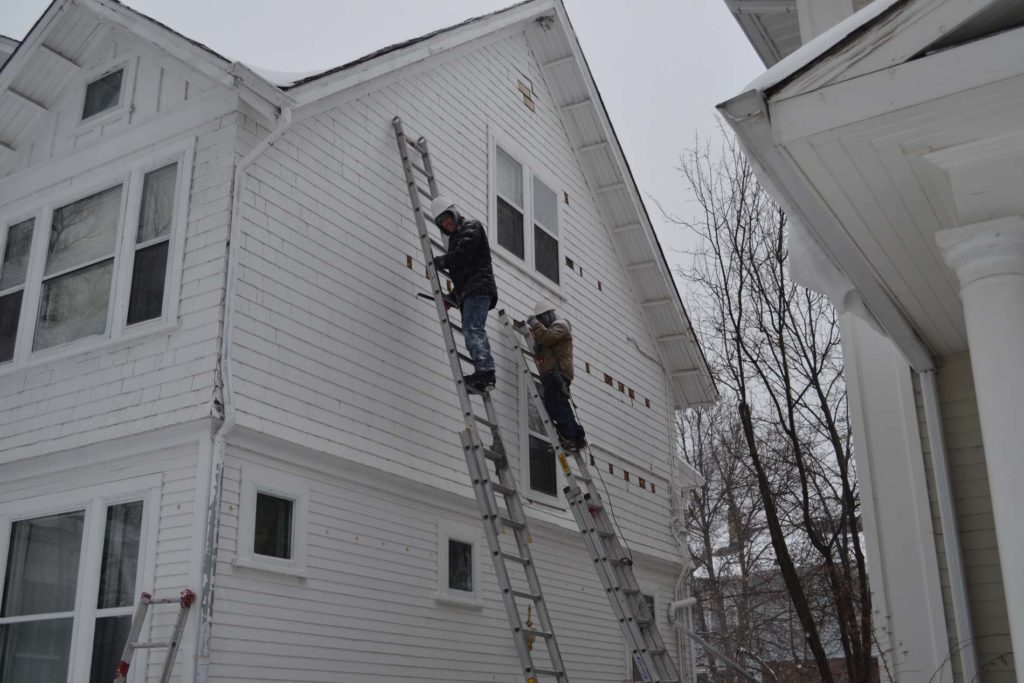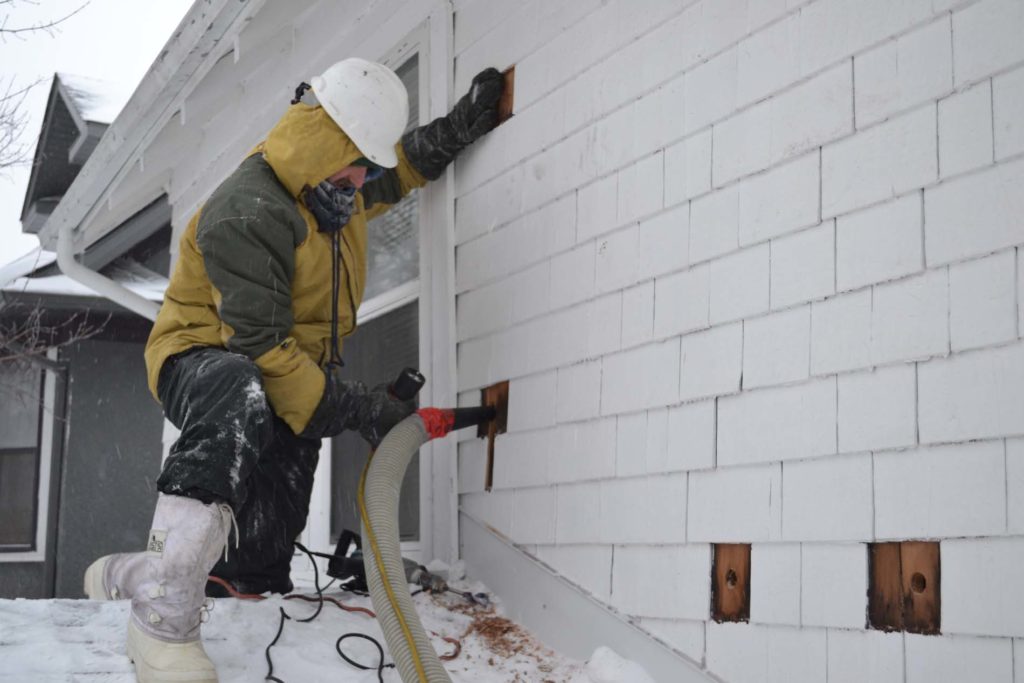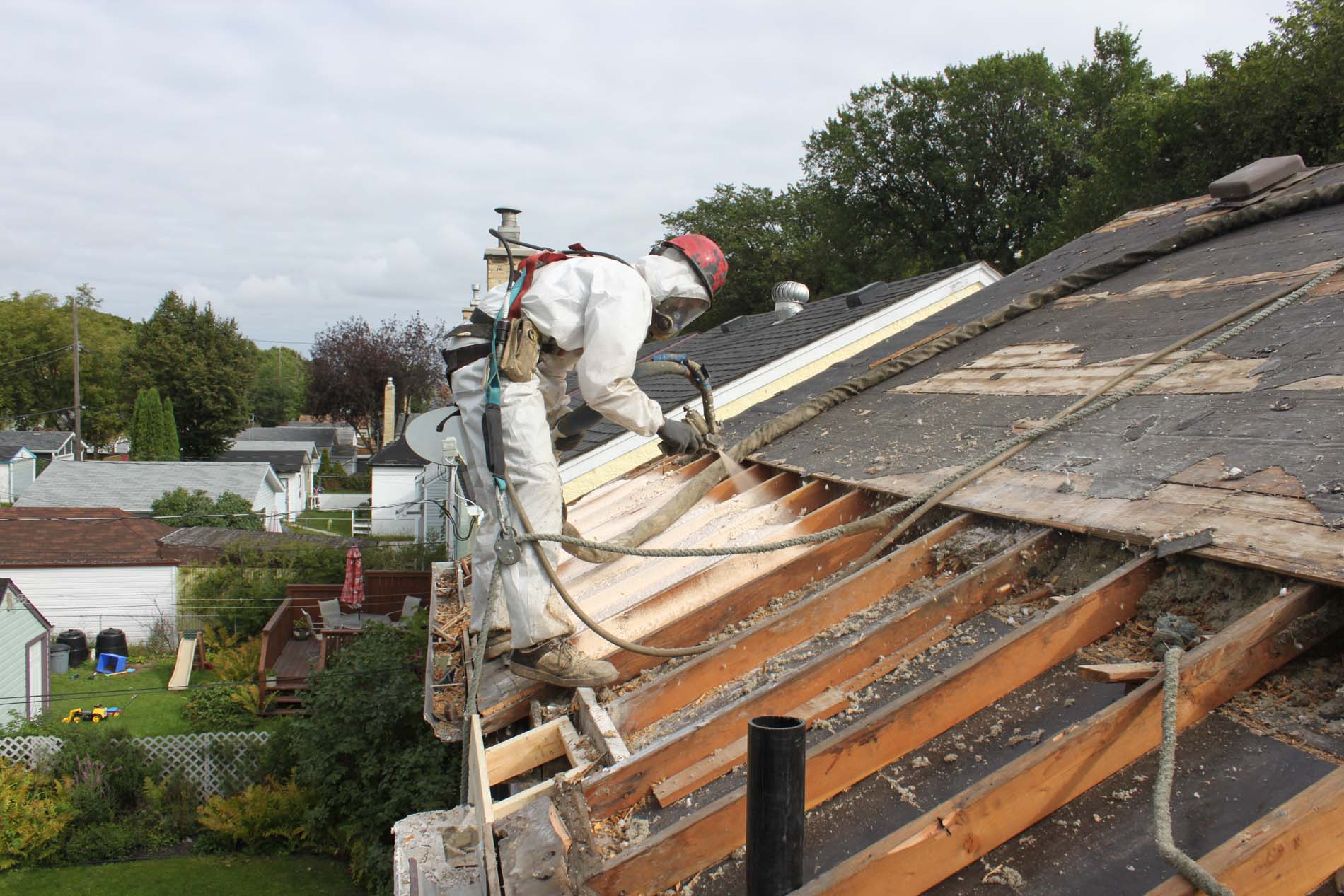Insulating Exterior Walls In Pre-1930 Homes: Dense-Pack Cellulose
If your house was built before 1930, chances are that the exterior walls are empty. If so, your walls can be drilled (usually from the outside) and filled with dense-pack cellulose insulation to R-14 (R-3.7 per inch). Dense-pack cellulose greatly reduces drafts in walls, especially compared to fibreglass batts, and provides excellent sound-proofing and fire-retardancy.
Insulation Exterior Walls In Post-War Houses
Post-war houses usually have a minimal amount of insulation in the walls (usually R-8 mineral wool batts). Therefore, these are not the best candidates to achieve a uniform distribution of cellulose with the dense-packing method. Furthermore, it is usually not considered practical or cost-effective to open up such walls unless the plaster or siding needs to be replaced. Other options can be considered on a case-by-case basis.



